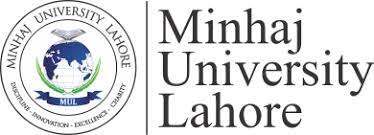The Role of Islamic Leadership Principles and Ethics in the Context of Finance-Growth Nexus in GCC Countries
DOI:
https://doi.org/10.58932/MULD0033Keywords:
Economic growth, financial development, GCC, Islamic leadershipAbstract
This paper investigates the role of Islamic leadership principles and ethics in the context of finance-growth nexus using balanced panel data from 6 Gulf Cooperation Council (GCC) countries for the 2002-2022 periods. The study employs a set of non-stationary panel data approaches to investigate the long-run relationships between the variables of interest. The findings show that there is a long-term relationship between the variables wherein financial development and Islamic leadership principles and ethics were found to have a significant positive impact on economic growth in GCC countries. This implies that financial development and Islamic leadership principles and ethics are important factors for promoting growth. Moreover, the results suggest that the effect of financial development on economic growth is contingent on the Islamic leadership principles and ethics in GCC countries. The interaction term and marginal effects computed are positive and significant at all levels of Islamic leadership principles and ethics. This means that the Islamic leadership principles and ethics have large direct and indirect positive impacts on economic growth in GCC countries.
References
Abdullah, H., Habibullah, M.S. & Baharumshah, A.Z. (2008). Fiscal policy, institutions, economic growth in Asian countries: Evidence from Pedroni’s cointegration approach. Malaysian Management Journal, 12(1-2), 117-135.
Adewosi, O.A., Donga, M., Idi, A. & Abdullahi, B. (2018). An examination of drivers of financial development: Evidence in West African countries. Pakistan Journal of Humanities and Social Sciences, 6(1), 132-143.
Ahmed, A. D. (2010). Financial liberalisation, financial development and growth linkages in Sub-Saharan African countries. Studies in Economics and Finance, 27(4), 314-339.
Al-Buraey, M. (1985). Administrative development: An Islamic perspective. London, Uk.
Ali, A. J. (2009). Islamic perspectives on leadership: A model. International Journal of Islamic and Middle Eastern Finance and Management, 2(2), 160-180.
Altalib, I. W. (2005). Aligning federal human resources departments with organisational goals and objectives to enhance performance in the public sector, (unpublished doctoral dissertation). University of Phoenix, US.
Ang, J.B. & McKibbin, W.J. (2007). Financial liberalization, financial sector development and growth: Evidence from Malaysia. Journal of Development Economics, 84, 215-233.
Asghar, N., & Hussain, Z. (2014). Financial development, trade openness and economic growth in developing countries: Recent evidence from panel data. Pakistan Economic and Social Review, 52(2), 99-126.
Bashir, U., Saeed, S., & Abbas, S. K. (2020). Strategies for New Product Development in an Emerging Market. Advances in Social Sciences Research Journal, 7(4), 393-397.
Bagehot, W. (1873). Lombard Street: A Description of the Money Market. New York: Scriber, Armstrong and Co.
Bangash, Z. (2000). The concepts of leaders and leadership in Islam. Retrieved on 27/11/2023 from http://www.islamicthought.org/pp-zb-leader.html.
Becsi, Z. & Wang, P. (1997). Financial development and growth. Economic Review-Federal Reserve Bank of Atlanta, 82(4), 46.
Brambor, T., Clark, W.R. & Golder, M. (2006). Understanding interaction models: Improving empirical analyses. Political Analysis, 14(1), 63-82.
Bush, T. & Glover, D. (2003). School Leadership: Concepts and Evidence. National College for School Leadership.
Chen, B., McCoskey, S.K. & Kao, C. (1999). Estimation and inference of a cointegrated regression in panel data: A Monte Carlo study. American Journal of Mathematical and Management Sciences, 19(1-2), 75-114.
Cherif, M. & Dreger, C. (2016). Institutional determinants of financial development in MENA countries. Review of Development Economics, 20(3), 670-680.
Choi, I. (2001). Unit root tests for panel data. Journal of International Money and Finance, 20(2), 249-272.
Chowdbury, N. (2002). Leadership strategies and global unity for the 21st: An Islamic perspective paper presented at the IGS-ICOJ International Conference on Leadership and Unity in Islam, Kobe, Japan.
Christopoulos, D.K. & Tsionas, E. G. (2004). Financial development and economic growth: Evidence from panel unit root and cointegration tests. Journal of Development Economics, 73(1), 55-74.
Chinn, M.D. & Fairlie, R.W. (2010). ICT uses in the developing World: an analysis of differences in computer and internet penetration. Review of International Economic, 18(1), 153-167.
Daud, W. N. W., Rahim, M. A., & Nasurdin, A. M. (2014). Quality of Islamic leadership and organizational performance within the takaful industry in Malaysia: a conceptual study. Asian Social Science, 10(21), 135.
De Gregorio, J. & Guidotti, P.E. (1995). Financial development and economic growth. World Development, 23(3), 433-448.
Demetriades, P. & Law, S. H. (2006). Finance, institutions and economic development. International Journal of Finance and Economics, 11(3), 245-260.
Elmi, Z. & Ariani, F. (2010). Governance and financial development in MENA region. Australian Journal of Basic and Applied Sciences, 4(12), 6021-6024.
Girma, S. & Shortland, A. (2007). The political economy of financial development. Oxford Economic Papers, 60(4), 567-596.
Glaeser, E.L., La Porta, R., Lopez-de-Silanes, F. & Shleifer, A. (2004). Do institutions cause growth? Journal of Economic Growth, 9(3), 271-303.
Goldsmith, R. W. (1969). Financial Structure and Development. Yale University Press, New Haven, CT.
Gurley, J.G. & Shaw, E.S. (1955). Financial aspects of economic development. American Economic Review, 45(4), 515-538.
Hassan, M.K., Sanchez, B. & Yu, J.S. (2011). Financial development and economic growth: New evidence from panel data. Quarterly Review of Economics and Finance, 51(1), 88-104.
Im, K.S., Pesaran, M.H. & Shin, Y. (2003). Testing for unit roots in heterogeneous panels. Journal of Econometrics, 115(1), 53-74.
Jones, B.F. & Olken, B. A. (2005). Do leaders matter? National leadership and growth since World War II. Quarterly Journal of Economics, 120(3), 835-864.
Karikari, J. (2010). Governance, financial liberalization, and financial development in sub- Saharan Africa. African Development Bank’s 2010 African Economic Conference, Tunisia, October 27-29, 2010.
Kilimani, N. (2007). Financial development and economic growth in Uganda. IUP Journal of Financial Economics, 5(1), 14-34.
King, R.G. & Levine, R. (1993). Finance and growth: Schumpeter might be right. Quarterly Journal of Economics, 108(3), 717-737.
Law, S.H. & Azman-Sain, W.N.W. (2012). Institutional quality, governance, and financial development. Economics of Governance, 13(3), 217-236.
Law, S.H. & Habibullah, M.S. (2006). Financial development, institutional quality and economic performance in East Asian economies. Review of Applied Economics, 2(2), 201-216.
Levine, R. (1997). Financial development and economic growth: Views and agenda. Journal of Economic Literature, 35(2), 688-726.
Levine, R. (2005). Finance and Growth: Theory and Evidence. In: Aghion, P. and Durlauf, S. (Ed.), Handbook of Economic Growth (p. 865-934), Elsevier, Amsterdam.
Levine, R. & Zervos, S. (1999). Stock markets, banks, and economic growth. American Economic Review, 88(3), 537-558.
Mankiw, N.G., Romer, D. & Weil, D.N. (1992). A contribution to the empirics of economic growth. Quarterly Journal of Economics, 107, 407-437.
Mauro, P. (1995). Corruption and growth. Quarterly Journal of Economics, 110(3), 681-712.
McKinnon, R.I. (1973). Money and Capital in Economic Development. Brookings Institution Press.
Narayan, P.K. & Sun, G.Z. (2007). The division of labour, capital, communication technology and economic growth: The case of China 1952-99. Review of Development Economics, 11(4), 645-664.
Northouse, P.G. (2017). Introduction to Leadership: Concepts and Practice. 4th Edition, Sage Publications.
Owoye, O. & Bissessar, N. (2014). Corruption in African countries: A symptom of leadership and institutions failure. In: Mudacumura, G.M. and Morçöl, G. (Eds.) Challenges to Democratic Governance in Developing Countries. Springer, New York.
Pedroni, P. (1999). Critical values for cointegration tests in heterogeneous panels with multiple regressors. Oxford Bulletin of Economics and Statistics, 61(S1), 653-670.
Pedroni, P. (2000). Fully modified OLS for heterogeneous cointegrated panels. Advances in Econometrics, 15, 93-130.
Pedroni, P. (2004). Panel cointegration: asymptotic and finite sample properties of pooled time series tests with an application to the PPP hypothesis. Econometric Theory, 20(3), 597-625.
Phillips, P.C. & Hansen, B.E. (1990). Statistical inference in instrumental variables regression with I(1) processes. Review of Economic Studies, 57(1), 99-125.
Porta, R.L., Lopez-De-Silane, F., Shleifer, A., & Vishny, R.W. (1997). Trust in Large Organizations. American Economic Review, 87(2), 333-338.
Quinn, D.P. & Woolley, J.T. (2001). Democracy and national economic performance: The preference for stability. American Journal of Political Science, 45(3), 634-657.
Rajan, R.G. & Zingales, L. (2003). The great reversals: The politics of financial development in the twentieth century. Journal of Financial Economics, 69(1), 5-50.
Ram, R. (1999). Financial development and economic growth: Additional evidence. Journal of Development Studies, 35, 164-174.
Roller, L.H. & Waverman, L. (2001). Telecommunications infrastructure and economic development: A simultaneous approach. American Economic Review, 91(4), 909-923.
Samarasinghe, T. (2018). Impact of governance on economic growth. MPRA Paper 89834, University Library of Munich, Germany.
Schumpeter, J.A. (1961). The Theory of Economic Development: An Inquiry into Profits, Capital, Credit, Interest, and the Business Cycle. Oxford University Press, New York.
Shaw, E.S. (1973). Financial Deepening in Economic Development. Oxford University Press, New York.
Solow, R.M. (1956). A Contribution to the theory of economic growth. Quarterly Journal of Economics, 70(1), 65-94.
Stock, J.H. & Watson, M.W. (2002). Macroeconomic forecasting using diffusion index. Journal of Business Economics and Statistics, 20, 147-162.
Straubhaar, T. (2003). Why growth is so important. Intereconomics, 38(6), 290-291.
Tan, Y.Y., Eng, A. & Robinson, E. (2010). Perspectives on growth: A political-economy framework – Lessons from the Singapore experience. In D. Brady and M. Spence (Eds.), Leadership and Growth, (p. 99 – 134), World Bank, Washington DC.
Tang, C.F., Salman, A. & Abosedra, S. (2020). Dynamic interaction of tourism, finance, and institutions in explaining growth in Asia’s little dragon economies. International Journal of Tourism Research, 22, 15-25.
Tang, C.F. & Tan, B.W. (2014). The linkages among energy consumption, economic growth, relative price, foreign direct investment, and financial development in Malaysia. Quality and Quantity, 48, 781-797.
Uddin, M.A., Ali, M.H. & Masih, M. (2017). Political stability and growth: An application of dynamic GMM and quantile regression. Economic Modelling, 64, 610-625.
Von Mises, L. & Batson, H. E. (1953). The Theory of Money and Credit. Yale University Press, New Haven.
Vu, K.M. (2011). ICT as a source of economic growth in the information age: Empirical evidence from the 1996-2005 period. Telecommunication Policy, 35, 357-372.
Wooldridge, J.M. (2016). Introductory Econometrics: A Modern Approach. 6th Edition, Cengage Learning, Boston.
Zolcsak, D. (2015). The effect of political leaders on economic growth through institutional change. Romanian Economic Journal, 18(58), 175-190.
Zubair, S. S. & Khan, M. (2014). Good governance: Pakistan’s economic growth and worldwide governance indicators. Pakistan Journal of Commerce and Social Sciences, 8(1), 258-271.









